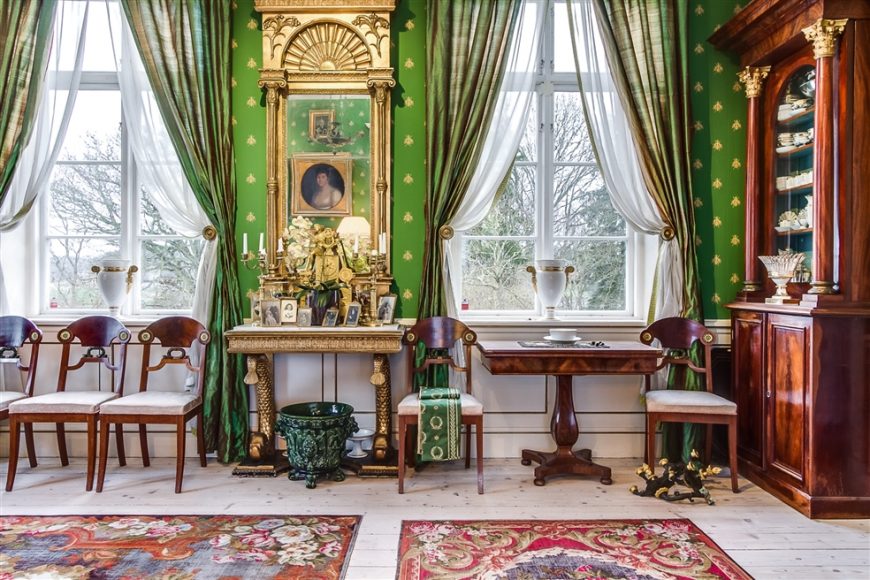Hoby Kulle Manor outside Karlshamn in the southern province of Blekinge was created in what is called “enskiftet”, an agricultural reform that lead to more connected and workable land compared to Sweden’s earlier scattered farmland in village communities. The estate Hoby Kulle was created by Circuit Judge Sven Emanuel Trädgårdh in 1807 and he turned it into the second largest agricultural estate in Blekinge.
The present building was completed in 1846 by Isak Otto Ruben who continued the extensive farming scheme. The dairy operation was especially successful and continued until the 1930s.
In the late 1900s it came under the care of Antique dealer Mats Freidenfeldt. He remained at Hoby Kulle for 22 years, taking advantage of the time to carefully restore and improve the buildings, not least the manor house itself. The result was very pleasing to see and he managed to give it a splendid appearance.
It came on the market for 15 Million SEK which was reduced to 11,7 Million SEK in 2016. It remained on the market for three years until it was sold to the Forsman family in 2019. Today, the estate encompasses 11,5 hectares and the new owners are putting their mark on the house and gardens. They are successfully offering Hoby Kulle for food, housing and conferences. We are also dealighted that they are keeping the antiquities heritage alive by running an antiques shop.
